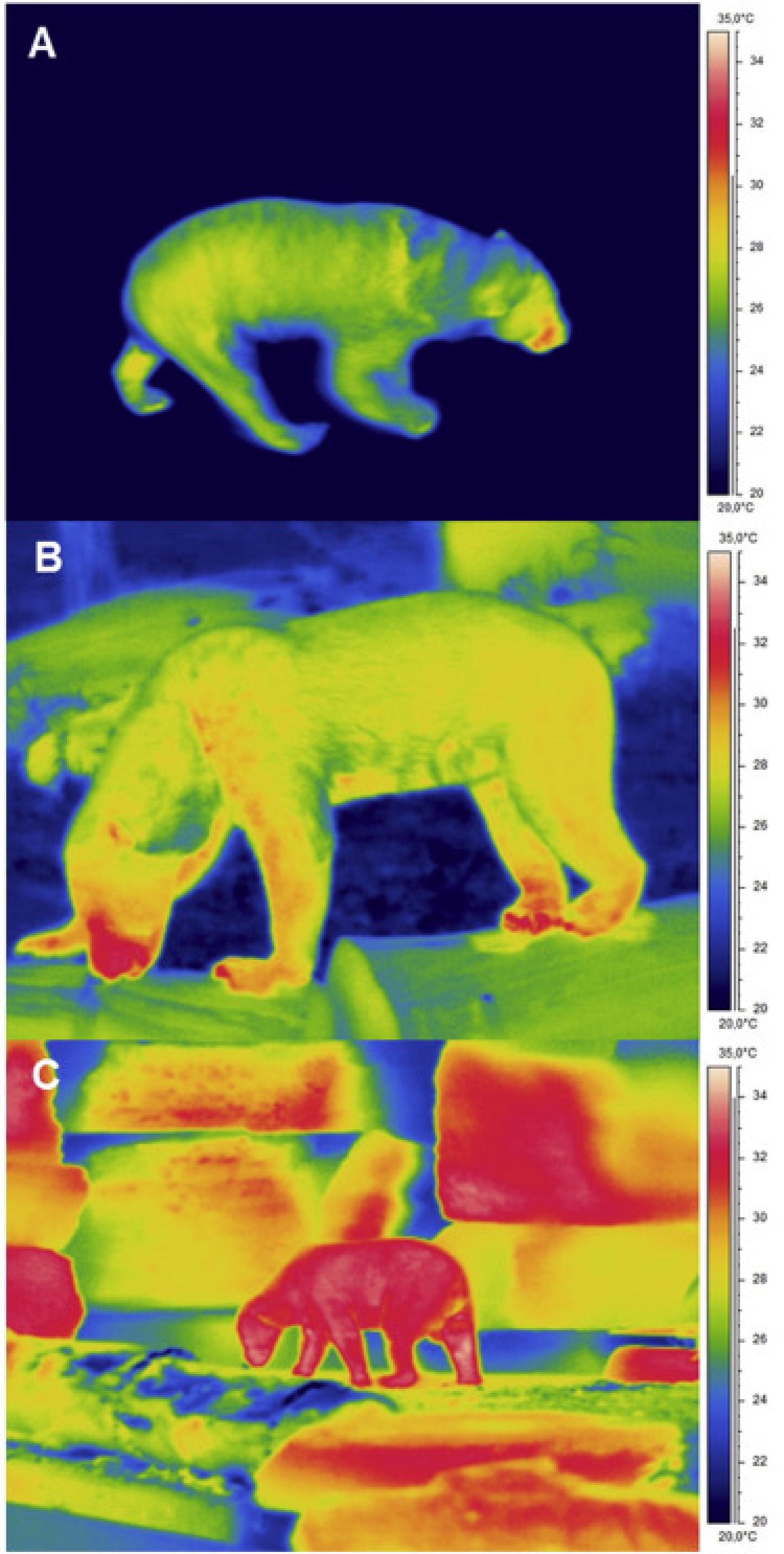
Elsevier, Journal of Thermal Biology, Volume 91, July 2020
Thermoregulation in Malayan sun bears is not fully understood. Therefore, in this study the effect of meteorological variables on both behavioural and autonomic thermoregulatory mechanisms in sun bears was examined in order to identify temperature thresholds for the activation of various thermoregulatory mechanisms. Infrared thermography was used to non‒invasively determine body surface temperature (TS) distribution in relation to ambient temperature (TA) and to determine the thermoneutral zone (TNZ) of sun bears. Thermographic measurements were performed on 10 adult sun bears at TA between 5 °C and 30 °C in three European zoos. To assess behaviours that contribute to thermoregulation, nine adult sun bears were observed at TA ranging from 5 °C to 34 °C by instantaneous scan sampling in 60 s intervals for a total of 787 h. Thermographic measurements revealed that the TNZ of sun bears lies between 24 °C and 28 °C and that heat is equally dissipated over the body surface. Behavioural data showed that behaviours related to thermoregulation occurred in advance of energetically costly autonomic mechanisms, and were highly correlated with TA and solar radiation. While the temperature threshold for the onset of thermoregulatory behaviours below the TNZ lies around 15 °C, which is well below the lower critical temperature (TLC) assessed by thermography, the onset for behaviours to prevent overheating occurred at 28 °C, which was closer to the estimated upper critical temperature (TUC) of sun bears. These findings provide useful data on the thermal requirements of sun bears with respect to the species potential to cope with the effects of climate change and deforestation which are occurring in their natural range. Furthermore, these results may have important implications for the care and welfare of bears in captivity and should be taken into consideration, when designing and managing facilities.
